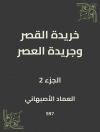William Blake’s ‘The Book of Urizen’ presents a profound exploration of cosmology and creation, captivating readers with its intricate blend of poetic language and visual artistry. Written in 1794, this work reflects Blake’s characteristic visionary style, where he intertwines imaginative narrative with philosophical inquiry. Delving into the figure of Urizen, a representation of rationalism and patriarchal authority, the text critiques Enlightenment thought while simultaneously embracing the chaos and creativity inspired by the Romantic spirit. The fantastical illustrations accompanying the text enhance the themes of duality and conflict, establishing a rich interplay between word and image that is central to Blake’s oeuvre. William Blake, an English poet, painter, and printmaker, was greatly influenced by the tumultuous socio-political landscape of 18th-century England. His deep-seated spirituality and opposition to institutionalized religion fueled his desire to explore the human condition through myth and symbolism. ‘The Book of Urizen’ serves as a testament to Blake’s inventive genius, mirroring his own spiritual struggles and philosophical contemplations, as he sought to transcend the confines of rationalism. This book is highly recommended for readers who are eager to engage with the symbolic complexities of literature and art. Blake’s work invites a reflective consideration of creativity versus constraint, making it an essential read for students of Romanticism, literary philosophy, and those interested in the intersections of art and literature.
Circa l’autore
William Blake (1757–1827) was a seminal figure in the history of the poetry and visual arts of the Romantic Age. An English poet, painter, and printmaker, Blake is now regarded as a towering literary figure, often associated with the Romantic movement despite his unique and idiosyncratic style. Celebrated for his expressiveness and creativity, Blake’s body of work includes some of the most beautiful and complex poems and illustrations of the 18th and 19th centuries. His writings explore themes of innocence and experience, rebellion against authority, and visionary prophetic narratives. ‘The Book of Urizen’ (1794), one of Blake’s most noteworthy prophetic books, delves into themes of creation, division, and the struggle of human existence. It demonstrates Blake’s distinctive approach to illustrating his own mythological universe, making use of a rich, symbolic language and illuminating engravings to accompany his profound verses. Despite receiving little public recognition during his lifetime and being considered mad by contemporaries for his idiosyncratic views, modern critics hail Blake’s work for its fearless exploration of philosophy and psychology. His visual art and poetry have been characteristically analyzed not only for their deep mythic structure and prophetic qualities but also for their revolutionary spirit and insightful critique into the clash between freedom and repression. Today, William Blake is celebrated for his artistic achievements and regarded as a forerunner in the counterculture of the 1960s and in the broader history of literature and art.












